Watterson and Miller Spawn Spencer & Locke
Apr 10, 2017
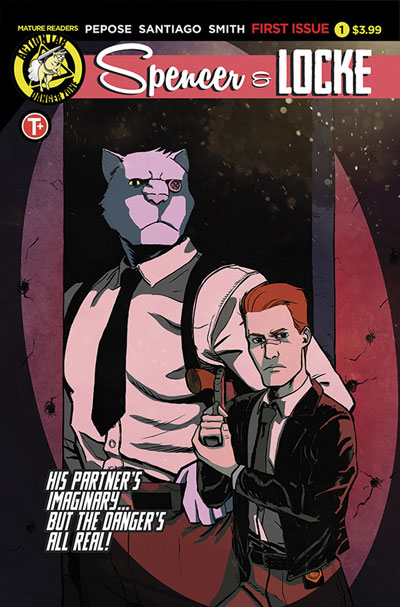 |
by Vince Brusio
Walking in familiar footsteps is a blessing. If you're lucky enough, you get to form a cover band in your garage to bang out the classics on drums, bass, and guitar. But if you’re a comic book creator, you've got one leg up on having to but a kit or amplifier. You already know what works in some of your favorite mediums because you've been reading them since grade school or college. If you were a fan of Sunday funnies, you read Bill Watterson’s Calvin & Hobbes. If you loved modern day crime comics, you cruised into Frank Miller’s Sin City. Those are the parameters. So writer David Pepose decided to color within the lines, but did his best to color with both pencil, inks, charcoals, and airbrush. The grand experiment in nostalgia culminated into what he calls Spencer & Locke #1 (FEB171047), and in this PREVIEWSworld Exclusive interview, he sheds light on that upcoming title which is brought to us by the folks at Action Lab Entertainment.
Spencer & Locke #1 (FEB171047) is in comic shops April 12.
**********
Vince Brusio: How did you come up with the idea for Spencer & Locke? Did the weed grow from earlier experiences? Previous prose? How did the garden grow for this new comic book series?
David Pepose: I’m a longtime comics reader, and when I decided I was going to write a book of my own, I wanted to be sure it was something that was uniquely tied to our medium and our history — something that would speak to comics fans first and foremost. As I toyed with ideas, I thought about the cartoonists I’ve admired over the years, and two of the first names that popped into my head were Bill Watterson and Frank Miller — when that mental image of “Calvin and Hobbes meets Sin City” hit me, that was what really set Spencer & Locke into motion.
The idea of a boy and his imaginary friend suddenly turned into a gritty buddy-cop drama with a twist — namely, that one of our heroes wasn’t real — was an idea that was just too fun to ignore. Once that premise clicked, I couldn’t stop thinking about the psychological state of someone who has literally hallucinated their best friend — what caused him to be this way? And what storytelling avenues could this overactive imagination lead to? Teaming up with artist Jorge Santiago, Jr., I think we found some great characters with Spencer & Locke.
Vince Brusio: Tell us about the characters in Spencer & Locke. And from where did you draw inspiration for them, in giving them form and voice boxes?
David Pepose: Locke is a hard-boiled cop who returns to the old neighborhood following the murder of his childhood sweetheart, schoolteacher Sophie Jenkins. Saddled with a vicious temper, a thirst for justice, and a truly harrowing upbringing, Locke can only turn to one friend to help him solve the case — his talking imaginary panther, Spencer.
The good cop to Locke’s bad cop, Spencer brings a sense of humor and a gentleness to Locke’s gruff attitude. These two go way back, with their own history and dynamic that lets Spencer and Locke play off each other as the best of friends. Together, the two are a surprisingly effective crimefighting team, with Spencer’s animal instincts helping Locke string together the most elusive of clues, while Locke’s tenaciousness and knack for violent improvisation often lets them live to fight another day.
Vince Brusio: Who is the audience for this book? What other works would they have in their reading collection that would be similar to this title?
David Pepose: We’re definitely targeting fans of action, psychological thrillers and suspense as well as students of comics history — whether you like crime fiction or just enjoy childhood nostalgia with a twist, this is the book for you. Fans of Calvin and Hobbes and Sin City should definitely check out Spencer & Locke, as should fans of Criminal, Afterlife With Archie, Southern Bastards, Blacksad, Richard Stark’s Parker, and the Warren Ellis and Jeff Lemire runs of Moon Knight.
Vince Brusio: How does this project challenge you? What makes it both work and play while you're developing the stories?
David Pepose: Great question — the biggest challenge of a book like Spencer & Locke is to do justice to the iconic cartoonists who inspired us, while still doing something unique and original as comics creators in our own right. But in many ways, knowing how innovative and revolutionary Watterson and Miller were only pushed Jorge and I to bring our A-game to every page of this project — these guys were trailblazers, and if we’re going to evoke their legendary careers (even in a pitch-black parody like Spencer & Locke) we couldn’t just phone it in.
But I think the juxtaposition of this dark noir world combined with biting buddy-cop banter and some surprisingly subversive flashbacks gave us as creators some really fun avenues to play around with — this concept has some amazing elasticity to it, which allows us to go anywhere from the mean streets of crime noir to car chases, gunfights, even alien worlds and dinosaurs. It’s that organic unpredictability of Spencer & Locke that gives our book a voice that I think will excite readers, and is truly unlike anything else on the stands.
Vince Brusio: If you could freeze-frame a scene or scenes that would best illustrate the chemistry of this book, how it explodes in your face, what would we see?
David Pepose: That’s a tough one… I’m torn between two. I think just our first page really sums up the tone and premise of our book, and acts as the mission statement of what we’re trying to come across here. Starting off with our very first flashback into Spencer and Locke’s childhoods, you might be lulled into a false sense of security when you recognize some familiar iconography, but by the end of the first page, you will quickly see there’s a good reason for both our heroes and our readers to stay on their toes.
But there’s also a quieter scene that I think really sums up who our heroes are. There’s a page in our first issue where Spencer and Locke are driving through the city at night, as Spencer tells his partner a story about growing up as a panther in the jungles of Africa. While Locke irritably points out that’s a complete fabrication, the moral of Spencer’s story is right on the money — beasts at least have the law of the jungle. But the real animals… they’re the ones who live in cities. It’s no coincidence that Watterson named his characters after philosophers — having these sorts of deeply held points of view are what help give characters their voices, and it’s that psychological landscape that I think really sets Spencer & Locke apart.
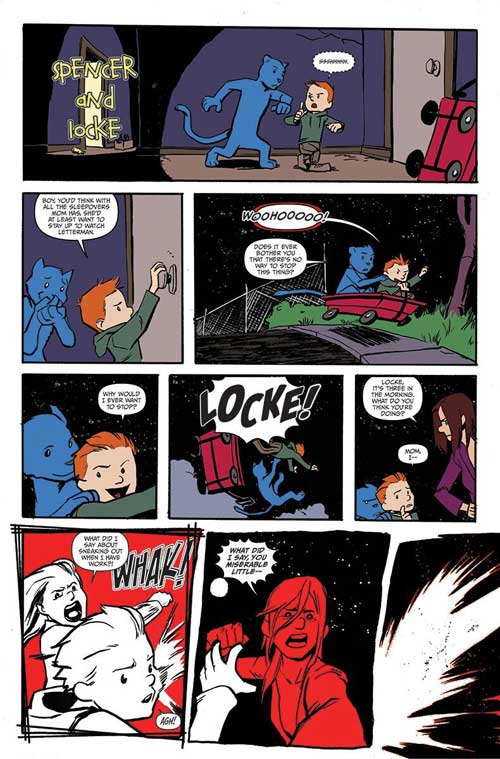 |
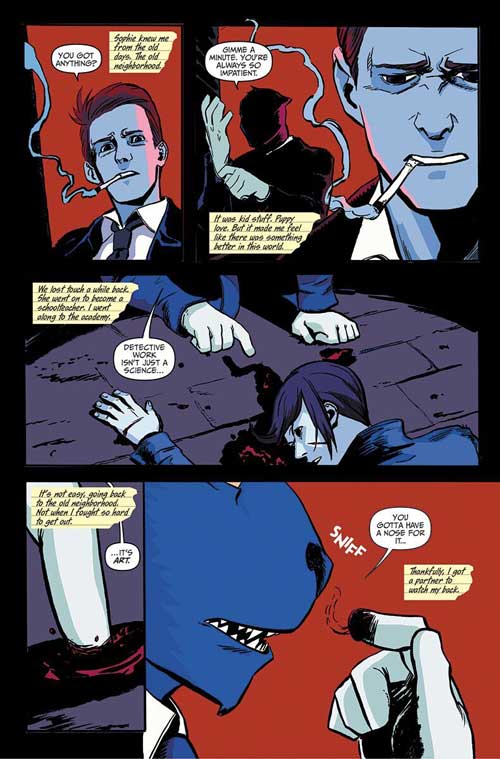 |
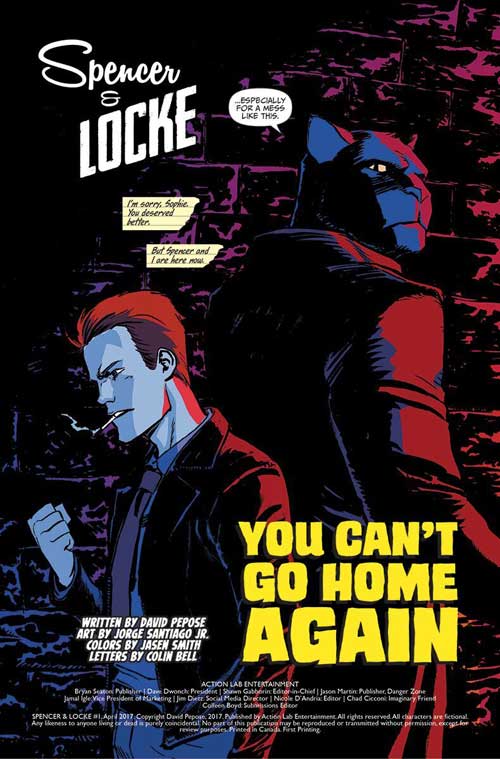 |
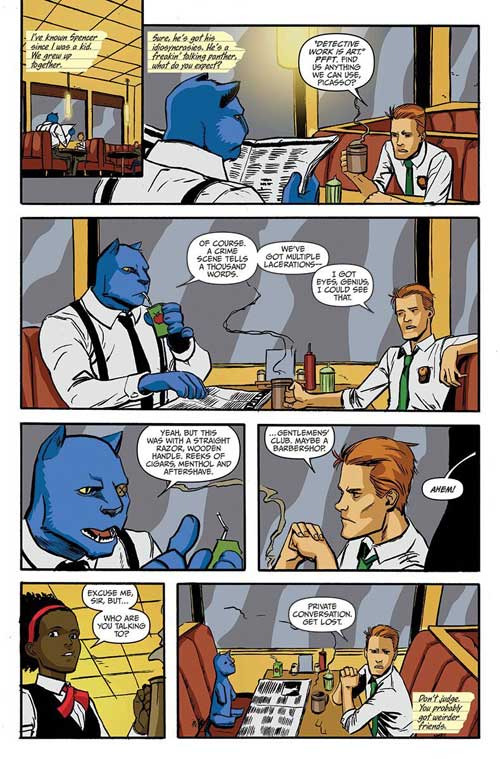 |
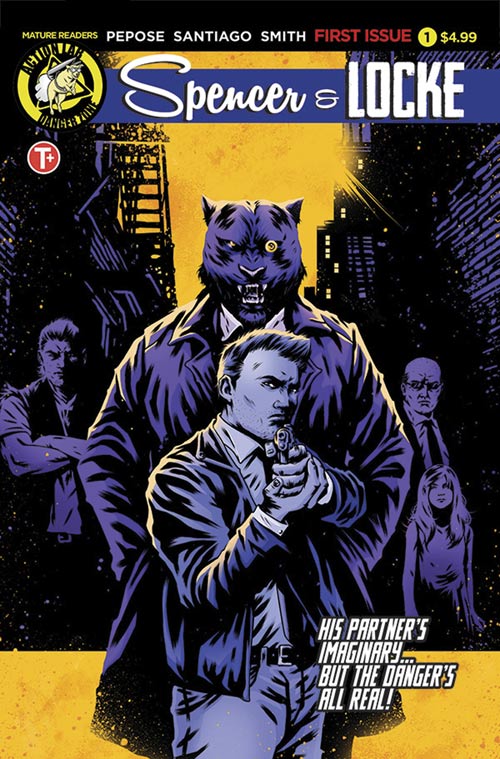 |
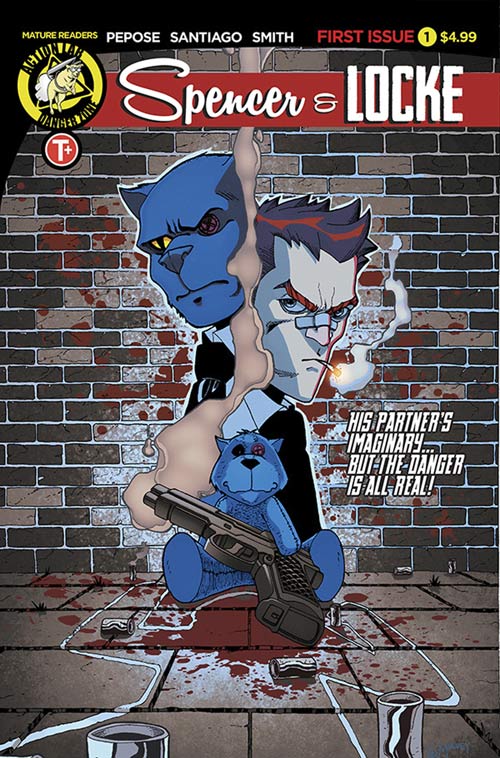 |
**********
Vince Brusio writes about comics, and writes comics. He is the long-serving Editor of PREVIEWSworld.com, the creator of PUSSYCATS, and encourages everyone to keep the faith...and keep reading comics.




